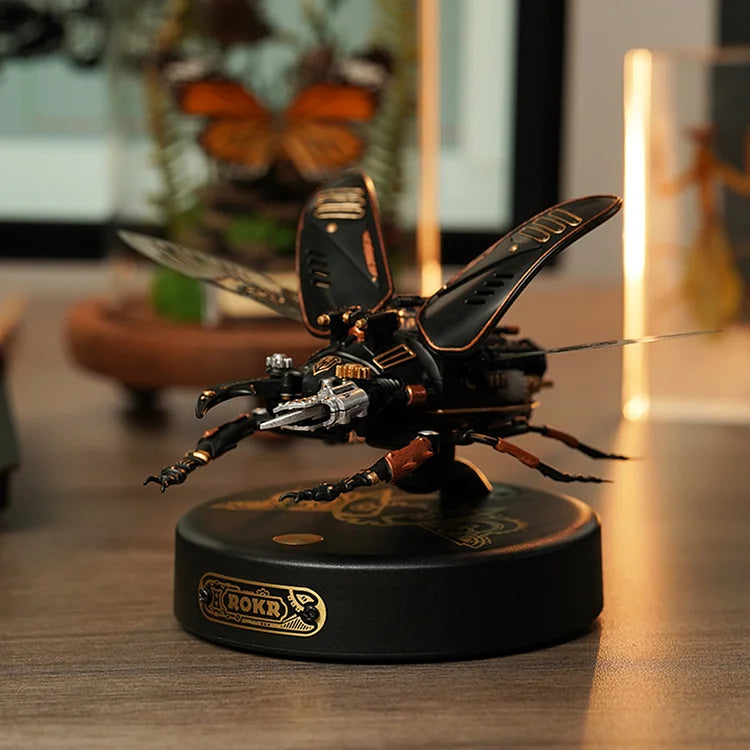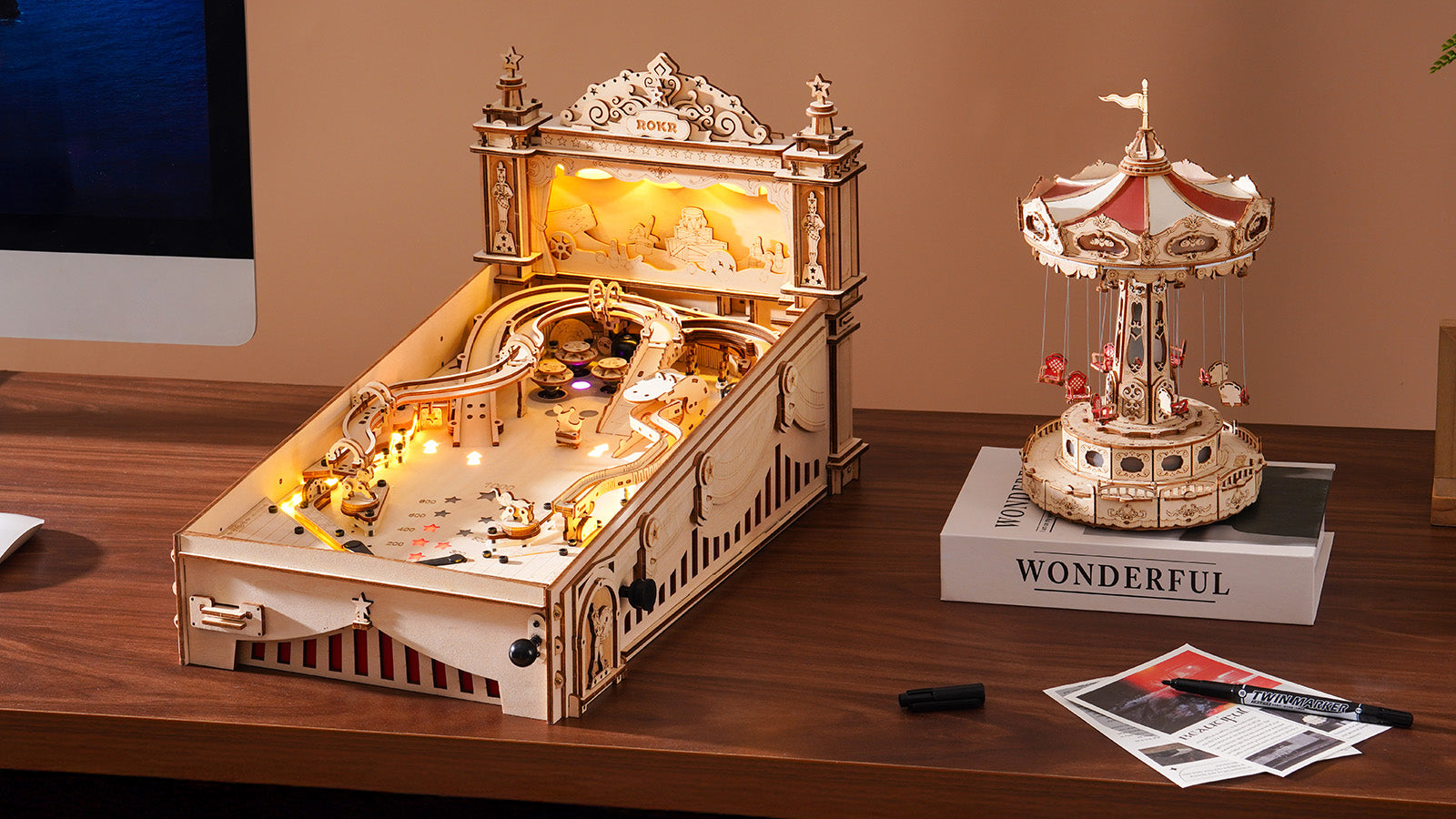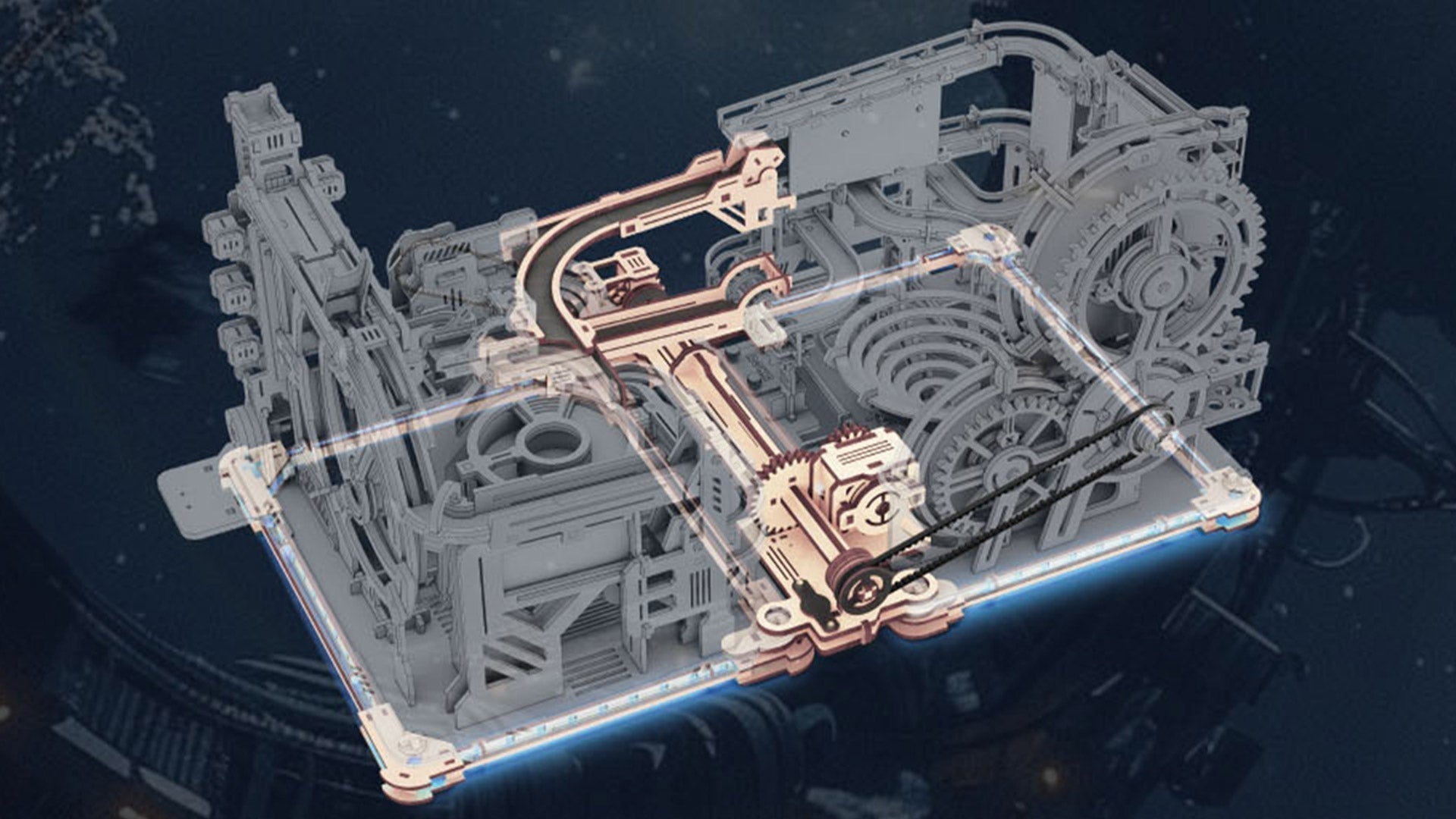3D puzzles do not only come in all sorts of shapes and sizes, but they’re also available in different materials. From the classic charm of wooden puzzles to the sleek allure of their metal counterparts, and the versatile appeal of paper and plastic creations, your choice of material can affect your assembly experience as well as your project’s overall durability.
In this post, we’ll unravel what makes each type of 3D puzzle material stand out from the rest and what you should look out for when crafting with them.
Understanding What 3D Puzzles Are
3D paper puzzles are intricate and engaging construction sets that challenge individuals to assemble three-dimensional models using pre-cut pieces. These puzzles typically come in flat, laser-cut sheets featuring various interlocking components. Puzzlers are required to carefully punch out these pieces and then follow a set of detailed instructions for assembly.
The key difference between 3D puzzles and traditional puzzles lies in the dimensionality of the final product. Traditional puzzles focus on flat projects. In contrast, 3D puzzles add an extra layer of complexity by challenging individuals to create models in three dimensions.
Engaging with 3D puzzles can offer several health benefits.
- Improves fine motor skills and hand-eye coordination
- Promotes dexterity and precision
- Enhances cognitive functions, such as focus, memory, and spatial reasoning
- Provides a calming and meditative experience, reducing stress and promoting relaxation
- Emotionally rewarding
- Improves problem-solving and planning skills
- Boosts self-confidence
Different Materials for 3D Puzzles
1. 3D Paper/Cardboard Puzzle
As its name implies, this type of 3D puzzle has pieces cut out of thick paper or cardboard. They are very affordable since they are cheaper to produce. Shipping and transportation fees are also lower because of their lighter material. 3D paper or cardboard puzzles are flimsy, which can sometimes lead to assembly difficulties. For stability, some manufacturers use foam connectors or inserts.
Pros
- Cheap
- Lightweight
Con
- Flimsy
- Fragile pieces make assembly challenging
- Not as popular as other 3D puzzle materials
2. 3D Wooden Puzzle

3D wooden puzzles are either made of medium-density fiberboard (MDF) or solid wood. Wood residuals are turned into fibers, combined with resin, and pressed to form MDF sheets. These MDF sheets or solid wood are then cut using precision laser engraving to create intricate designs and details. 3D wooden puzzles have a timeless appeal and natural beauty that appeals to a lot of crafters. They are also durable, lasting for years with minimal maintenance.
Pros
- More durable than 3D paper puzzle
- Naturally beautiful aesthetics
- Precise cuts
- Low-maintenance
- MDF ones are affordable
- Widely available
Cons
- Solid wood 3D wooden puzzles can be heavy
- Can be expensive depending on the wood used
Popular 3D wooden Puzzles
3. 3D Plastic Puzzle/3D Crystal Puzzle
3D plastic puzzles are usually made of PVC, ABS, or PET. They are often geared towards kids and are often easy to build. On the other hand, 3D crystal puzzles use interlocking, translucent crystalline acrylic pieces that are more pleasing to the eyes. While these do come in vibrant colors, they are considered less premium due to their material.
Pros
- Resistant to wear and tear
- Pieces aren’t prone to breaking
- Resistant to stains and spills
- Budget-friendly
- Easy assembly makes them suitable for kids
- Vibrant colors
- Widely available
Cons
- Less premium compared to other materials
- Not eco-friendly
- Can become brittle and prone to breaking with age
4. 3D Metal Puzzle

These puzzles typically come as flat, laser-cut metal sheets, often stainless steel, with individual pieces that need to be carefully detached and assembled. Unlike other materials, metal sheets allow for intricate parts without compromising on strength. 3D metal puzzles can even last for years since they are resistant to corrosion. The sleek, polished, and reflective surface enhances its visual appeal and gives it a premium look. That said, this type of 3D puzzle is more expensive and needs to be handled carefully to avoid cuts.
Pros
- Robust and corrosion-resistant
- Intricate, small parts retain their form
- Provides ample challenge to experienced builders
- Luxurious aesthetics
Cons
- Not for children and beginners
- More expensive
- Can have sharp edges
- Less flexible
- Heavier
Popular 3D Metal Puzzle
Tips to Choose the Right Type of 3D Puzzle for You
Here are some key considerations to help you find the right type of 3D puzzle for you.
1. Determine who will be assembling the 3D puzzle.
If you’re buying a 3D puzzle for kids or family activity, 3D puzzles made of paper, cardboard, and metal aren’t ideal. 3D paper puzzles have flimsy parts that make assembly trickier while 3D metal puzzles can have sharp edges. Instead, you should opt for the more flexible 3D wooden puzzles or 3D plastic puzzles which are often geared towards children.
2. Think about the 3D puzzle’s purpose.
Puzzles that are for play or that may be handled frequently should be durable and easy to clean like 3D plastic puzzles. Meanwhile, if you’re planning to display your completed project, go for a material that looks aesthetically pleasing like wood and metal.
3. Consider your budget.
Different materials come with different price tags. Consider your budget and choose a material that meets your financial constraints.
4. Choose a material with your preferred visual appeal.
3D wooden puzzles are a great choice if you like a natural look. On the other hand, 3D plastic puzzles are suitable if you prefer vibrant colors while 3D metal puzzles are a good pick if you want a glossy and reflective surface.
5. Analyze the environmental impact of the 3D puzzle’s material.
Some people prefer materials that are recyclable or made from sustainable sources. If this is a matter of importance for you, go for 3D puzzles that are made of paper, cardboard, and wood.
Ultimately, the 3D puzzle that you choose should be made of a material that aligns with your personal preferences. Remember to weigh these factors based on your priorities and preferences to select the 3D puzzle material that best suits your needs.









Leave a comment
This site is protected by hCaptcha and the hCaptcha Privacy Policy and Terms of Service apply.